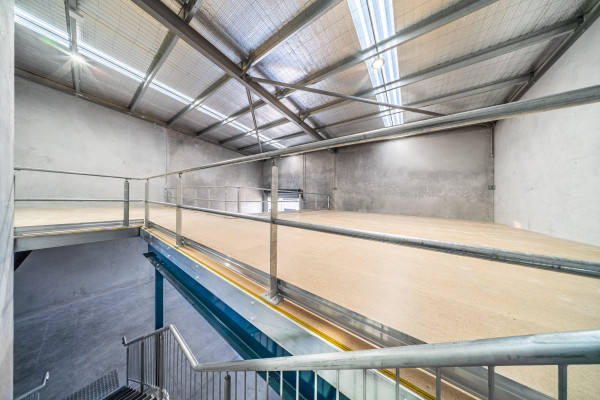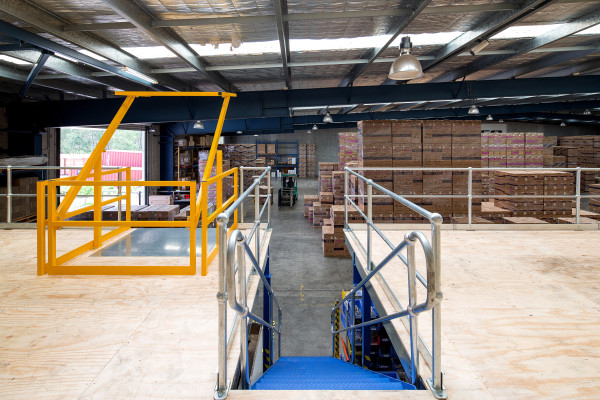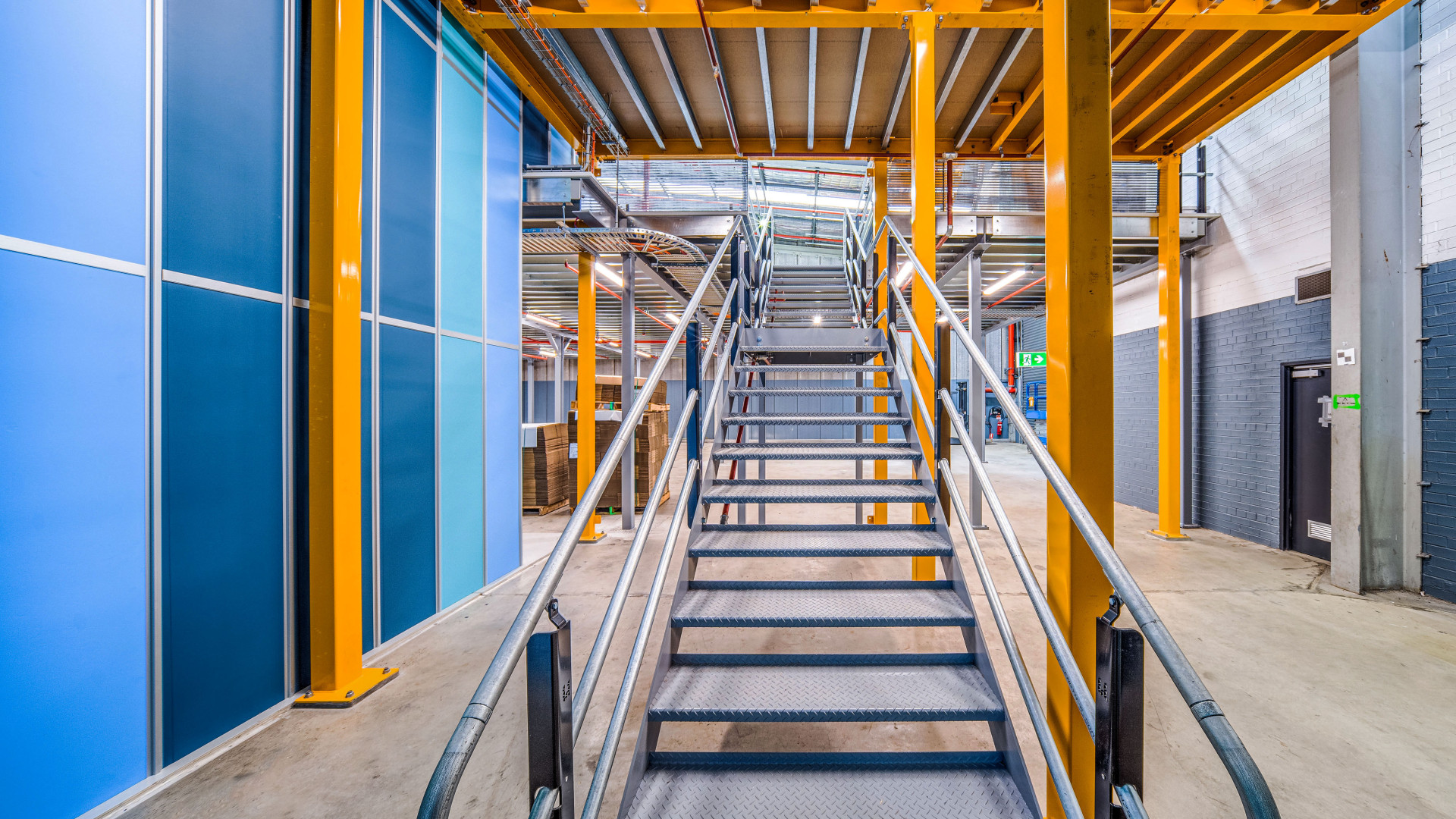Warehouse fires can happen in a matter of seconds — with long lasting consequences. An uncontrolled fire can wreak havoc on a business, not only putting people's safety at risk but also causing significant damage to property, equipment and essential data. When a fire strikes, it often leads to a lengthy and expensive downtime while repairs and rebuilding are underway. The first step in snuffing out these risks before they ignite? Understanding warehouse fire protection requirements and standards.
Any warehouse or facility manager in Australia should be well across fire safety regulations. If you are in need of a refresher or are considering refitting your warehouse with a commercial mezzanine — this blog will guide you through the essentials for fire safety in factories and warehouses.
Knowing Your Risks and Regulations
The cornerstone of effective warehouse fire protection begins with a firm grasp on the potential hazards and the regulatory framework governing warehouse fire safety. Australian standards and legislation for fire safety are periodically updated, necessitating regular reviews of your fire safety protocols. A fire safety audit is a great starting point. It helps identify specific risks within your facility. Key risks include:
-
Flammable materials: Improper storage of flammable items such as chemicals, paper, or textiles can create a high fire risk.
-
Electrical hazards: Overloaded circuits, faulty wiring, and malfunctioning electrical equipment can easily spark a fire.
-
Maintenance lapses: Neglecting regular checks and maintenance of fire safety systems like sprinklers and alarms can lead to failures in crucial moments.
-
Human error: Mishaps such as improper disposal of smoking materials or incorrect handling of machinery can ignite fires.
-
Blocked exits and aisles: Obstructed pathways and exits can hinder emergency evacuations and fire response efforts.

Comprehensive Fire Protection Solutions
Once risks are identified, the next step is to install appropriate fire protection equipment. This includes not only basic tools like fire extinguishers and fire hose reels but also advanced fire detection and suppression systems tailored to the size, type, and specific needs of your warehouse. For instance, facilities dealing with hazardous materials might require more sophisticated fire suppression solutions compared to those storing non-flammable goods.
Fire Safety for Mezzanine Warehouses
Introducing a mezzanine structure in a warehouse can change fire safety requirements. These elevated areas can alter how smoke and heat circulate, necessitating tailored fire protection measures. Ensuring complete coverage might require additional smoke detectors and sprinklers above and below the mezzanine. Moreover, emergency exits and evacuation plans must be adapted to accommodate these structural additions, keeping safety a priority in these optimised spaces.
Sticking to Fire Protection Warehouse Standards
Compliance with Australian Standard AS 3745 - 2010, which provides guidelines for planning emergencies in facilities, is crucial. This standard covers everything from the installation and routine servicing of fire protection systems (as detailed in AS1851-2012) to the development of a fire prevention plan that aligns with both national and state-based regulations. Other regulatory codes you should be aware of include:
National Construction Code (NCC)
The NCC provides the foundational standards for building design and construction, including the use of fire-resistant materials, and the installation of fire detection and suppression systems. It also ensures buildings are designed to facilitate safe evacuation and firefighter access.
State and Territory Regulations
Each Australian state and territory may implement additional fire safety regulations that address specific local risks and conditions. These vary by location, enhancing the base requirements set by the NCC.
Occupational Health and Safety (OHS) Regulations
OHS regulations promote fire safety by mandating fire safety training for employees and providing them with necessary safety equipment to handle fire emergencies effectively.
Maintenance and Training: Key Pillars of Warehouse Fire Safety
Regular maintenance and testing of fire protection systems ensure they function as expected in the event of a fire. This proactive approach helps identify potential malfunctions early, significantly reducing the risk of fire-related incidents.
Skill up: fire training for warehouse staff
Equally important is training your staff. A well-informed team that understands how to respond to fire emergencies and how to use fire safety equipment effectively is invaluable. This training should be an integral part of staff induction programs, including temporary and casual workers, ensuring everyone is prepared for emergency situations.
Signage and emergency preparedness
Proper signage plays a vital role in warehouse fire safety. All hazards should be clearly marked, and fire protection equipment and emergency exits must be visibly signed to facilitate quick evacuations. An efficient emergency entry system to track staff movements can also enhance safety by aiding in head counts during evacuations.

Building a Safer Tomorrow for Your Warehouse
Ensuring optimal fire safety in factories and warehouses is not just about complying with regulations—it is about proactively preventing potential disasters and creating a safe working environment for everyone. By understanding and implementing the right fire protection measures, you can significantly reduce the risks associated with fire. Remember, effective fire protection starts with awareness and is sustained through diligence and continuous improvement.
Before sinking your teeth into a new warehouse fit-out or development, it is always best to consult a qualified fire engineer for a comprehensive evaluation that is critical for each project, whether it is a new multi-storey warehouse build or the addition of a mezzanine floor system. By taking into consideration the protective measures detailed above, you can protect the safety of both your assets, property and your staff.
Consult Unistor for Top Fire Safety Guidance
As Australia’s leading manufacturer and supplier of warehouse mezzanine systems, Unistor is dedicated to providing solutions that prioritise safety. We offer end-to-end project services from consultation, design, manufacturing to installation, ensuring you deal directly with the manufacturer. Certified for loading and Work Health and Safety compliant, we back our mezzanine floor systems with a 5-year guarantee on all workmanship—giving you the ultimate peace of mind. If you have any questions or need further assistance with setting up fire protection systems for your multi-storey warehouse, don’t hesitate to reach out to our expert team.
Choose Unistor as the right mezzanine solution and increase your storage capacity by double.



